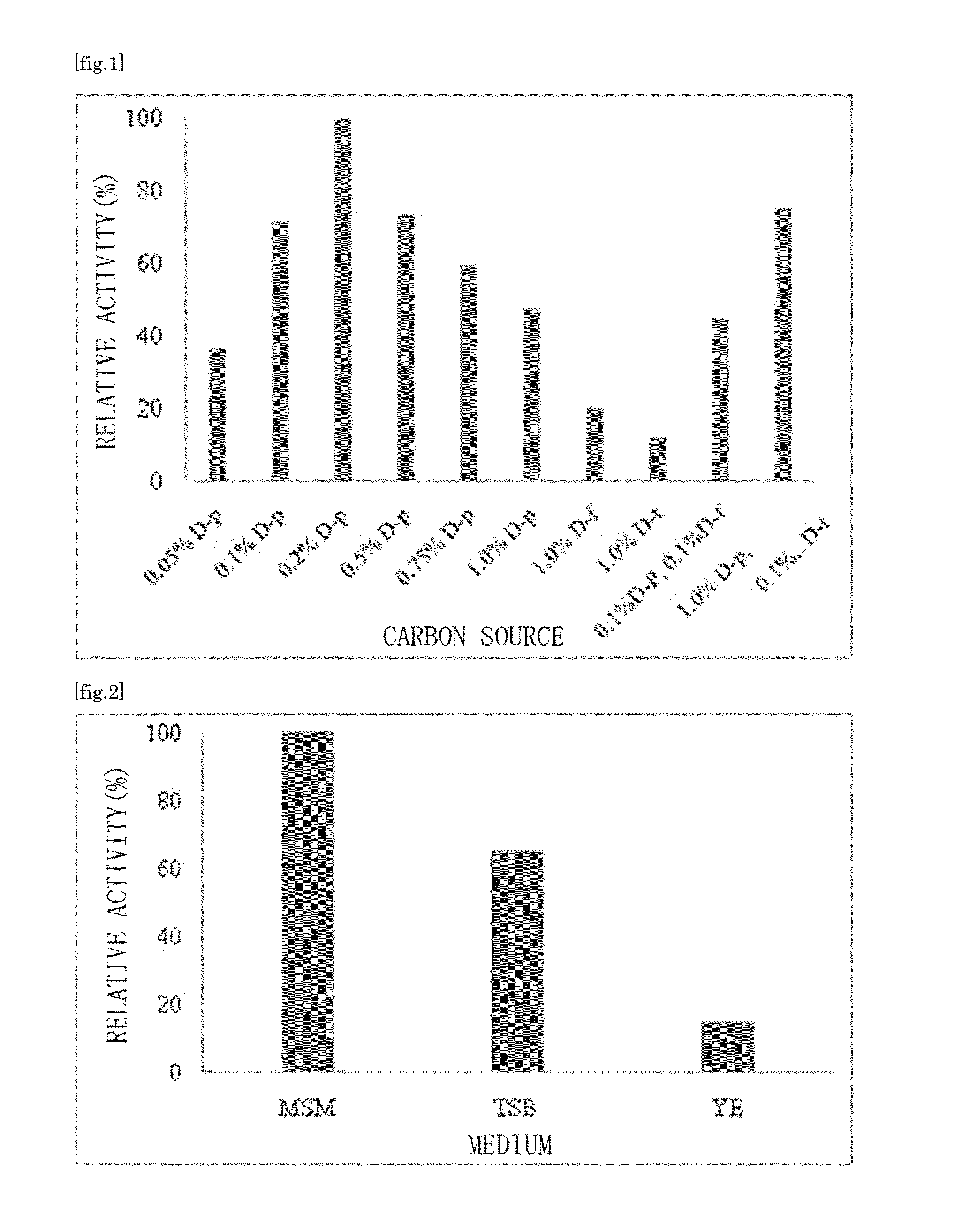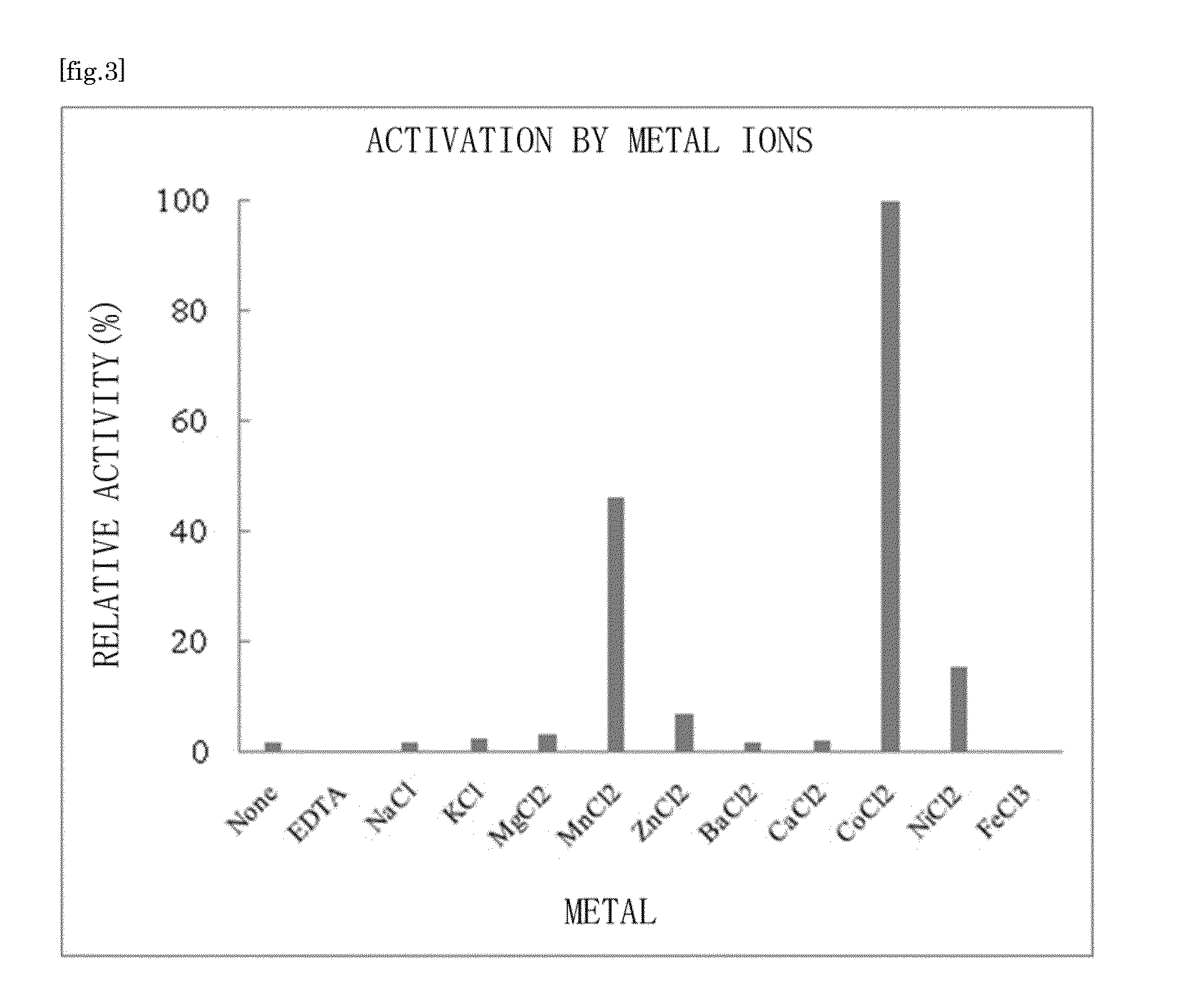Ketose 3-epimerase produced by arthrobacter globiformis
a technology of ketose and ketone, which is applied in the field of ketose 3epimerase, can solve the problems of poor ability of pseudomonas cichorii/i> to produce d-ketose 3-epimerase, and low activity of pseudomonas cichorii/i>, a phytopathogenic bacterium, to achieve the effect of high activity
- Summary
- Abstract
- Description
- Claims
- Application Information
AI Technical Summary
Benefits of technology
Problems solved by technology
Method used
Image
Examples
experiment 1
Arthrobacter globiformis M30 (Accession Number NITE BP-1111) Strain Culture
[0116]A seed culture medium 1% (v / v) of the Arthrobacter globiformis M30 (accession number NITE BP-1111) strain was aseptically added to an inorganic salt medium that contained 0.2% D-psicose as a carbon source, and ammonium sulfate as a nitrogen source. The bacteria were cultured at 30° C. for 16 hours while being agitated under aerated conditions. The ketose 3-epimerase activity in the resulting culture medium was about 14 units / 100 ml culture medium.
experiment 2
Arthrobacter globiformis M30 (Accession Number NITE BP-1111) Strain Culture and Extraction of Crude Enzyme
[0117]The bacteria were harvested from the culture medium by centrifugation. The harvested bacteria were washed with 1 mM tris-HCl buffer (pH 7.0). The bacteria were then suspended in 10 ml of 1 mM tris-HCl buffer (pH 7.0), and the bacterial suspension was disrupted with an ultrasonic homogenizer (SONICS & MATERIALS) while being cooled in ice-cold water. The disrupted cells were centrifuged at 12,000 rpm for 20 min, and the supernatant was obtained as crude enzyme.
experiment 3
[0118]The crude enzyme was placed in a Cellulose Ester Dialysis Membrane (SPECTRUM Laboratory), and the whole membrane was immersed in a 20 mM EDTA-containing 10 mM tris-HCl buffer for 12 hours for dialysis. The membrane was washed twice with 10 mM tris-HCl (pH 7.0) buffer, and a crude enzyme liquid was removed from the membrane.
PUM
| Property | Measurement | Unit |
|---|---|---|
| molecular weight | aaaaa | aaaaa |
| molecular weight | aaaaa | aaaaa |
| pH | aaaaa | aaaaa |
Abstract
Description
Claims
Application Information
 Login to View More
Login to View More - R&D
- Intellectual Property
- Life Sciences
- Materials
- Tech Scout
- Unparalleled Data Quality
- Higher Quality Content
- 60% Fewer Hallucinations
Browse by: Latest US Patents, China's latest patents, Technical Efficacy Thesaurus, Application Domain, Technology Topic, Popular Technical Reports.
© 2025 PatSnap. All rights reserved.Legal|Privacy policy|Modern Slavery Act Transparency Statement|Sitemap|About US| Contact US: help@patsnap.com



